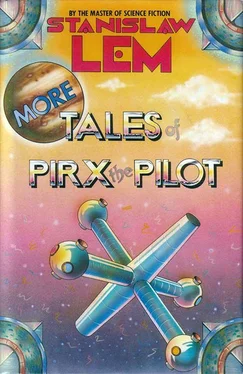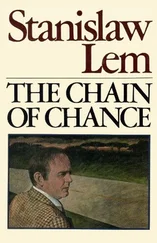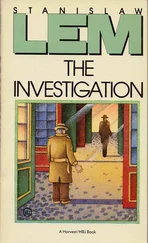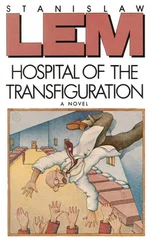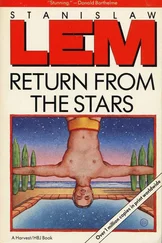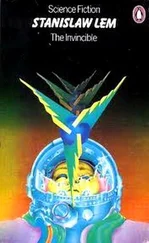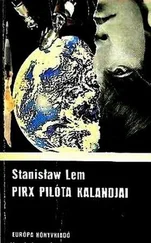This was an awkward age in an astronaut’s career—for him more so than for anybody else, since in the space profession anyone less than perfectly fit was automatically expendable. As the physiologists attested, the demands made by astrocology were too severe, even for the physically and spiritually fittest; to be demoted from the front ranks was to forfeit all. The medical boards were ruthless, devastatingly so, but necessary: no one could be allowed to collapse or die of a heart attack at the controls. People in their prime went ashore and suddenly found themselves near retirement—the examining doctors were so used to their subterfuges and desperate simulations that they waived disciplinary action. And rare was the pilot who could have his eligibility extended past fifty.
Fatigue is the brain’s toughest enemy; a hundred or a thousand years hence, this may change, but for now it is an agonizing prospect for anyone during prolonged space flight—anyone at the shadow line.
Klyne belonged to a new generation of astronauts; Pirx, on the other hand, to those called “anti-computer”—thus he was a “reactionary” and a “fossil.” Some of his contemporaries had already retired; depending on their talents and effectiveness, they became lecturers or members of the Cosmic Tribunal, took cushy jobs in the shipyards, joined administrative boards, tended their gardens. On the whole, they held their own; they simulated acceptance of the inevitable; but how it cost some of them!
There were also aberrations born of protest, of obstinacy, of pride and fury, of the sense of a wrong unjustly incurred. Although it was a profession that did not allow for madmen, certain individuals came dangerously close to madness, only to stop short of crossing the line. Under the mounting pressure of the inevitable, people did the wackiest things—bizarre things. Oh, he knew all about those quirks, aberrations, superstitions, to which both strangers and long-time shipmates—whose stability he would have personally sworn by—were susceptible. Sweet ignorance was hardly a privilege in a line of work demanding such sure-fire know-how; every day neurons perished in the brain by the thousands, so that by thirty a person was already in the midst of it, that peculiar, imperceptible, but incessant race, that contest between the slackening of reflexes undermined by atrophy, and their perfection achieved through experience; from which arose that shaky equilibrium, that acrobatic tightrope act with which one had to live, to fly.
And to dream. Whom was he out to kill the night before? The dream obviously signified something, but what? Reclining on the cot, which squeaked under his weight, he sensed a sleepless night on the way—though he had never lost a night’s sleep, the insomnia, too, was inevitable. That alarmed him. Not the prospect of a sleepless night so much as his body’s recalcitrance, signaling a vulnerability, a break in what was hitherto infallible, the mere thought of which, at this moment, connoted defeat. He was not content to lie there wide-eyed against his will, and so, even though it was silly, he sat up, stared vacantly at his pajamas, then shifted his gaze to the bookshelves.
Not expecting to find anything of interest, he was all the more startled to discover a row of thick-bound volumes above the compass-pocked plotting board. There, neatly arrayed, stood practically the entire history of areology, most of the titles being familiar to him from his reference library on Earth. He got up and ran his fingers along their solid spines. Herschel, the father of astronomy, was there; so was Kepler’s Astronomia Nova de Motibus Stellae Martis ex Observationìbus Tychonis Brahe, in a 1784 edition. Then came Flammarion, Backhuysen, Kaiser, and the great dreamer, Schiaparelli—a dark-brown Latin edition of his Memoria terza —and Arrhenius, Antoniadi, Kuiper, Lowell, Pickering, Saheko, Struve, Vaucouleurs, all the way up to Wernher von Braun and his Exploration of Mars. And maps, rolls of them, inscribed with all the canals—Margaritifer Sinus, Lacus Solis, even Agathodaemon… He stood before the familiar, not really having to open any of these books with their burnished, plywood-thick covers. The musty effluvium of old linen bindings and yellowed pages, bespeaking both dignity and decrepitude, revived memories of long hours spent in contemplation of the mystery that had been attacked, besieged for two centuries by a horde of hypotheses, only to have their authors die, one by one, unrequited. Antoniadi went a lifetime without observing any canals, and only in the twilight of old age did he grudgingly acknowledge “some lines bearing a likeness to same.” The “canalists,” meanwhile, charted their observations at night, whiling away hours at the eyeglass for one of those fleeting moments of stationary atmosphere, at which time, they averred, a hair-thin geometric grid emerged on the fuzzy gray surface. Lowell made it dense, Pickering less so, but he was in luck with his “gemination,” as the incredible duplication of canals was called. An illusion? Why, then, did some canals never double?
He used to pore over these books as a cadet—in the reading room, of course, since they were too rare to be circulated. Pirx—need it be said?—sided with the “canalists.” Their arguments rang infallibly. Graff, Antoniadi, Hall—those incurable doubting Thomases—had their observatories in the air-polluted cities of the North, whereas Schiaparelli worked in Milan, and Pickering on his mountain overlooking the Arizona desert. The “anti-canalists” conducted the most ingenious experiments: they would chart a disk with randomly inscribed dots and blotches that, viewed from a distance, took on a gridlike pattern, and then ask: How could they escape the most powerful instruments? Why were the lunar canals visible with the naked eye? How could the earlier observers have missed them, and everyone after Schiaparelli take them as self-evident? And the “canalists” would counter: The lunar canals went undetected in the pretelescopic age. Earth’s atmosphere wasn’t stable enough to permit detection with high-powered telescopes; the drawing experiments only sidestepped the issue. The “canalists” had an answer for everything: Mars was a giant frozen ocean, the canals were rifts in its meteor-impacted ice mass or, rather, wide fluvial valleys watered by the spring thaws and graced with vernal efflorescence. When spectroscopy revealed an insufficient water content, they decided the canals were enormous troughs, long valleys covered with cloud masses borne by convex currents adrift from the pole to the equator. Schiaparelli never publicly acknowledged these as figments of a foreign imagination, playing on the ambiguity of the term “canal.” This reticence on the part of the Milanese astronomer was shared by many others, who never named, only charted and displayed, but in his papers Schiaparelli left behind drawings explaining the origin of the doubling phenomenon, the famous gemination process: when the parallel, hitherto arid rills were inundated, the water suddenly caused the helices to darken, like wood grooves filled with ink. The “anti-canalists,” meanwhile, did not just deny the existence of the canals and amass a body of counterargument, but over time became increasingly vindictive.
In his hundred-page pamphlet, Wallace, after Darwin the second architect of the theory of natural evolution, hence not even an astronomer by profession, a man who probably never even glimpsed Mars through the lenses, demolished the canal hypothesis, and any thought of life on Mars as well: Mars, he wrote, was not only not inhabited by sentient beings, as Lowell claimed, but was actually uninhabitable. None remained neutral; all had to proclaim their credos. The next generation of canalists began to speak of a Martian civilization, thus deepening the split: a realm bearing traces of sentient activity, some said; a corpselike desert, countered others. Then Saheko observed those mysterious flashes—volatile, extinguished by cloud formations, too fleeting to be volcanic eruptions, arising during the period of planetary conjunction, thus ruling out a solar reflection on the planet’s high glacial range.
Читать дальше
